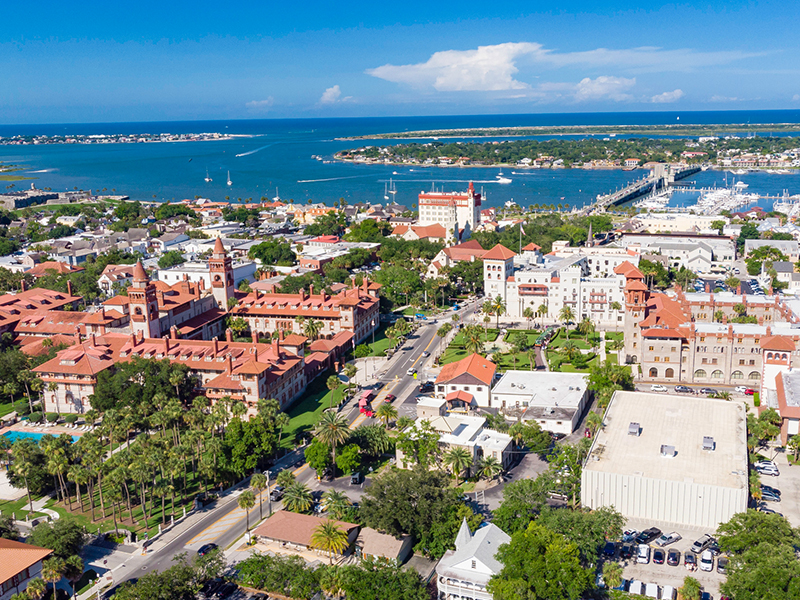
St. Augustine
St. Augustine, Florida, is a historic city located on the northeast coast of Florida, known as the oldest continuously inhabited European-established settlement in the continental United States. Founded in 1565 by Spanish explorers, St. Augustine is rich in history, culture, and charm, offering a unique blend of the past and present.
Historic SignificanceSt. Augustine is often referred to as the “Nation’s Oldest City,” and its historic significance is evident in its well-preserved architecture, cobblestone streets, and numerous landmarks. The city’s history spans more than 450 years, and it has been under the rule of several nations, including Spain, Britain, and the United States, all of which have left their mark on the city’s culture and architecture.
Iconic LandmarksThe city is home to numerous historic sites and landmarks. The most famous of these is the Castillo de San Marcos, a 17th-century Spanish stone fortress that stands as a testament to the city’s colonial past. Other notable landmarks include the St. Augustine Lighthouse & Maritime Museum, the Cathedral Basilica of St. Augustine, and the Fountain of Youth Archaeological Park, where legend says Ponce de León searched for the fabled Fountain of Youth.
Historic DowntownThe heart of St. Augustine is its historic downtown area, a vibrant district filled with narrow streets, centuries-old buildings, and an array of shops, restaurants, and museums. St. George Street, the city’s most famous pedestrian thoroughfare, is lined with historic homes, quaint boutiques, art galleries, and eateries, offering visitors a charming and immersive experience.
Cultural RichnessSt. Augustine’s cultural scene is as rich as its history. The city hosts numerous festivals and events throughout the year, celebrating everything from its Spanish heritage to contemporary arts. The St. Augustine Art Association and the Lightner Museum are just a few of the many institutions that showcase the city’s artistic and cultural heritage.
Beautiful BeachesIn addition to its historical attractions, St. Augustine is known for its beautiful beaches. St. Augustine Beach and Vilano Beach are popular spots for both locals and visitors, offering pristine sand, gentle surf, and a relaxed coastal vibe. The beaches are perfect for sunbathing, swimming, surfing, and fishing, and they provide a wonderful contrast to the historic sights of the city.
Culinary SceneSt. Augustine’s culinary scene is diverse and vibrant, reflecting its multicultural heritage. The city boasts a variety of dining options, from casual seafood shacks to fine dining establishments. Many restaurants focus on fresh, local ingredients, with seafood being a prominent feature. Additionally, the city is home to several historic inns and bed-and-breakfasts, offering charming accommodations that enhance the overall experience.
Education and MuseumsSt. Augustine is also home to several educational institutions and museums. Flagler College, a small liberal arts college, is located in the historic Ponce de León Hotel, a magnificent Spanish Renaissance-style building that is a National Historic Landmark. The St. Augustine Pirate & Treasure Museum and the Colonial Quarter provide interactive experiences that bring the city’s history to life.
Natural BeautyThe natural beauty of St. Augustine extends beyond its beaches. The city is surrounded by parks, waterways, and marshes that offer opportunities for boating, kayaking, and wildlife viewing. Anastasia State Park is a popular destination for outdoor enthusiasts, offering camping, hiking, and birdwatching in a scenic coastal environment.
ConclusionSt. Augustine is a city that seamlessly blends its rich historical past with the vibrancy of modern life. Whether you’re interested in exploring centuries-old landmarks, relaxing on the beach, or enjoying a diverse culinary experience, St. Augustine offers something for everyone. Its unique charm, combined with its deep historical roots, makes it a must-visit destination in Florida.
Sorry we are experiencing system issues. Please try again.
